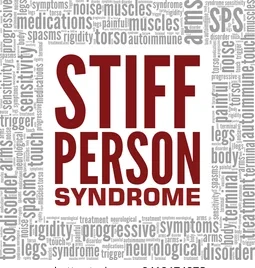Living with a relatively rare condition like Stiff Person Syndrome can be quite isolating at times, particularly when you’re not even sure if anyone else really understands. Perhaps you have just received a diagnosis, or perhaps you are the one who gets diagnosed – whichever, learning about the condition is step one in effective management. Here are the key facts, symptoms, diagnosis and treatment strategies for SPS that will help make finding your way through this difficult condition a little easier.
Stiff Person Syndrome is one of the rare neurological disorders affecting the central nervous system, causing extreme stiffness and spasms in the muscles. Generally speaking, the symptoms attack the muscles from the trunk and limbs, where patients present with anomalies in posture, pain, and reduced mobility. SPS is considered an autoimmune condition because the immune system mistakenly attacks the body’s nerve cells, thus resulting in the symptoms.
Main Symptoms of Stiff Person Syndrome
The most salient feature of SPS is variability in the presence of muscle stiffness, which can onset and offset intermittently or may progress gradually over time. Variability exists in the nature and intensity of symptoms between different patients, although commonly experienced symptoms include:
- Muscle Rigidity: The muscles tend to remain stiff at most times, especially back and leg muscles.
- Painful Muscle Spasms: Convulsions which occur at short interval and may be precipitated by stress, noise or physical contact.
- Restraint Mobility: A difficulty in gait or walk also presents as a symptom caused by the spasm and tightness of the muscles.
- Postural Abnormalities: Long continuing muscle stiffness results in an abnormal gait and even hunching of posture.
Early Warning Signs to Look Out For
Although these symptoms of SPS, as outlined above, may take some time to develop, there are some early hints that can signal the presence of SPS. For example, people may experience occasional muscle stiffness, or hyperacusis and increased sensitivity to sounds, or even minor spasms without an apparent cause. The sooner such a subtle symptom is noticed and reported, the easier it will become to determine a proper diagnosis and begin its treatment.
Causes and Risk Factors
Stiff Person Syndrome is thought to occur due to the body recognizing proteins responsible for muscle functioning as if it is an alien object to be destroyed. The causes by which this immune reaction occurs are, however, not well understood. Some have thought that this syndrome may be attributable to genetic and environmental imbalances.
It has been evident from numerous works of other researchers that individuals may be at a higher risk of getting a particular SPS due to certain specific genes. In the case of environmental factors, the immune response attack is apparently triggered by infections. Learning disabilities, muscular dystrophy, epilepsy and other autoimmune diseases like type 1 diabetes or thyroiditis may co-occur with SPS and thus may predispose someone to having SPS.
How is stiff person syndrome diagnosed by doctors?
Diagnosing SPS is not easy because it is mistaken for other neurological and muscular diseases most of the time. However, the doctor will rely on clinical examination, history and physical syndrome and some investigations to come up with diagnosis.
Diagnostic Tests for SPS
- Blood Tests: Anti-ISA test: Doctors look for antibodies that are directed to a particular protein called GAD (glutamic acid decarboxylase). Abnormalities in this system make patient affected by SPS have high titers of these antibodies.
- Electromyography (EMG): This is the measurement of Electrical Conductivity in muscles. That is powerful to identify changes in muscle reaction to medicine that may be present in clients with SPS.
- MRI or CT Scans: These are done to eliminate causes of other neurological disorders and to determine if the internal brain or spine is affected in anyway.
Treatment for Stiff Person Syndrome
There is no cure for SPS, but it can be used to control symptoms and the quality of life perceived. The majority of people with SPS do not recover and require, often multiple, medications and therapies, which can help control muscle stiffness and stop spasms.
Medication-Based Management
- Benzodiazepines: These drugs are given with the aim of bringing about the degree of relaxation of muscles considered stiff. Benzodiazepines that are familiar are examples are Diazepam (Valium).
- Immunotherapy: These are; intravenous immunoglobulines commonly in the form of IVIG that assists in managing the immune system that should ideally function in an autoimmune fashion.
- Muscle Relaxants: A medication referred to as baclofen can also ease the muscle spasms.
Living with Stiff Person Syndrome
Life with SPS can be trying, but things are done to make your day-to-day life much easier. First of all, be surrounded by a compassionate team of doctors and loved ones who will help you in any aspect of life, and then seek out support groups to connect with peers experiencing something similar to you. It takes care of all your physical needs and adherence to your regimen to help control the symptoms.
“FAQs”
- What is the first sign of Stiff Person Syndrome? The most common first indication is mild muscular stiffness usually starting in the back or legs and typically occurring with periods of abating symptoms.
- What happens if you have Stiff Person Syndrome: Is it fatal? No, SPS not fatal, but it makes patient bedridden if one never receive treatment at all.
- In what manner does SPS differ from other neurological disorder? In contrast to most of the other neurological disorders, SPS gives its patients muscle rigidity and tone which increases over time, as well as painful muscle spasms provoked by external stimuli.
- Can lifestyle changes help manage SPS? Absolutely. Often patients can substantially improve the management of their symptoms with frequent physical therapy, stress management, and other modifications of their environment.
- Is Stiff Person Syndrome hereditary? There is some likelihood of some genetic influence; however, the majority of cases appear to present sporadically, with no apparent significant familial pattern.


